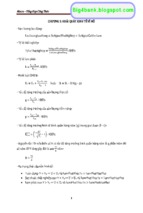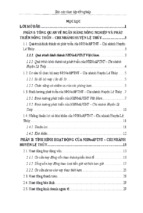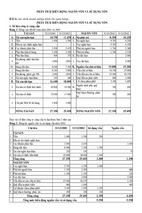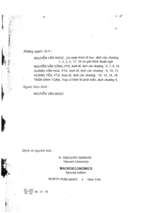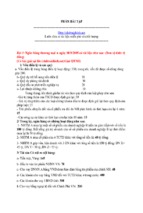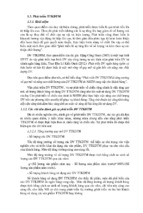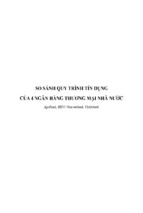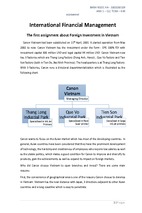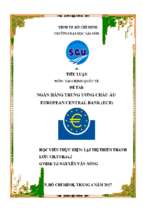Advances in Spatial Science
Editorial Board
Manfred M. Fischer
Geoffrey J. D. Hewings
Peter Nijkamp
Folke Snickars (Coordinating Editor)
Titles in the Series
H. Eskelinen and F. Snickars (Eds.)
Competitive European Peripheries
VIII, 271 pages. 1995. ISBN 3-540-60211-9
Z. J. Acs, H. L. F. de Groot and P. Nijkamp (Eds.)
The Emergence of the Knowledge Economy
VII, 388 pages. 2002. ISBN 3-540-43722-3
A. Nagurney and S. Siokos
Financial Networks
XVI, 492 pages. 1997. ISBN 3-540-63116-X
R. J. Stimson, R. R. Stough and B. H. Roberts
Regional Economic Development
X, 397 pages. 2002. ISBN 3-540-43731-2
M. M. Fischer and A. Getis (Eds.)
Recent Developments in Spatial Analysis
X, 434 pages. 1997. ISBN 3-540-63180-1
S. Geertman and J. Stillwell (Eds.)
Planning Support Systems in Practice
XII, 578 pages. 2003. ISBN 3-540-43719-3
P. McCann
The Economics of Industrial Location
XII, 228 pages. 1998. ISBN 3-540-64586-1
B. Fingleton (Ed.)
European Regional Growth
VIII, 435 pages. 2003. ISBN 3-540-00366-5
R. Capello, P. Nijkamp and G. Pepping (Eds.)
Sustainable Cities and Energy Policies
XI, 282 pages. 1999. ISBN 3-540-64805-4
T. Puu
Mathematical Location and Land Use Theory,
2nd Edition
X, 362 pages. 2003. ISBN 3-540-00931-0
M. M. Fischer, L. Suarez-Villa and M. Steiner (Eds.)
Innovation, Networks and Localities
XI, 336 pages. 1999. ISBN 3-540-65853-X
J. Bröcker, D. Dohse and R. Soltwedel (Eds.)
Innovation Clusters and Interregional Competition
VIII, 409 pages. 2003. ISBN 3-540-00999-X
J. Stillwell, S. Geertman and S. Openshaw (Eds.)
Geographical Information and Planning
X, 454 pages. 1999. ISBN 3-540-65902-1
D. A. Griffith
Spatial Autocorrelation and Spatial Filtering
XIV, 247 pages. 2003. ISBN 3-540-00932-9
G. Clarke and M. Madden (Eds.)
Regional Science in Business
VIII, 363 pages. 2001. ISBN 3-540-41780-X
J. R. Roy
Spatial Interaction Modelling
X, 239 pages. 2004. ISBN 3-540-20528-4
M. M. Fischer and Y. Leung (Eds.)
GeoComputational Modelling
XII, 279 pages. 2001. ISBN 3-540-41968-3
M. Beuthe, V. Himanen,
A. Reggiani and L. Zamparini (Eds.)
Transport Developments and Innovations
in an Evolving World
XIV, 346 pages. 2004. ISBN 3-540-00961-2
M. M. Fischer and J. Fröhlich (Eds.)
Knowledge, Complexity and Innovation Systems
XII, 477 pages. 2001. ISBN 3-540-41969-1
M. M. Fischer, J. Revilla Diez and F. Snickars
Metropolitan Innovation Systems
VIII, 270 pages. 2001. ISBN 3-540-41967-5
L. Lundqvist and L.-G. Mattsson (Eds.)
National Transport Models
VIII, 202 pages. 2002. ISBN 3-540-42426-1
J. R. Cuadrado-Roura and M. Parellada (Eds.)
Regional Convergence in the European Union
VIII, 368 pages. 2002. ISBN 3-540-43242-6
G. J. D. Hewings, M. Sonis and D. Boyce (Eds.)
Trade, Networks and Hierarchies
XI, 467 pages. 2002. ISBN 3-540-43087-3
G. Atalik and M. M. Fischer (Eds.)
Regional Development Reconsidered
X, 220 pages. 2002. ISBN 3-540-43610-3
Y. Okuyama and S. E. Chang (Eds.)
Modeling Spatial and Economic Impacts
of Disasters
X, 323 pages. 2004. ISBN 3-540-21449-6
L. Anselin, R.J.G.M. Florax and S. J. Rey
Advances in Spatial Econometrics
XXII, 513 pages. 2004. ISBN 3-540-43729-0
R.J.G.M. Florax and D. A. Plane (Eds.)
Fifty Years of Regional Science
VIII, 400 pages. 2004. ISBN 3-540-22361-4
D. Felsenstein and B.A. Portnov (Eds.)
Regional Disparities in Small Countries
VI, 333 pages. 2005. ISBN 3-540-24303-8
A. Reggiani and L.A. Schintler (Eds.)
Methods and Models in Transport
and Telecommunications
XIII, 364 pages. 2005. ISBN 3-540-25859-0
Giuseppe Arbia
Spatial
Econometrics
Statistical Foundations
and Applications
to Regional Convergence
With 19 Figures
and 11 Tables
123
Professor Giuseppe Arbia PH D Cantab.
Department of Business, Statistical,
Technological and Environmental Sciences,
University “G. d’Annunzio” of Chieti
Viale Pindaro, 42; I65127, Italy
also Professor at LUISS “Guido Carli” University of Rome (IT)
and at the USI University of Lugano (CH)
E-mail:
[email protected]
URL address: http://www.unich.it/~arbia/
Cataloging-in-Publication Data
Library of Congress Control Number: 2006921995
ISBN-10 3-540-32304-X Springer Berlin Heidelberg New York
ISBN-13 978-3-540-32304-4 Springer Berlin Heidelberg New York
This work is subject to copyright. All rights are reserved, whether the whole or part of
the material is concerned, specifically the rights of translation, reprinting, reuse of
illustrations, recitation, broadcasting, reproduction on microfilm or in any other way,
and storage in data banks. Duplication of this publication or parts thereof is permitted
only under the provisions of the German Copyright Law of September 9, 1965, in its
current version, and permission for use must always be obtained from Springer-Verlag.
Violations are liable for prosecution under the German Copyright Law.
Springer is a part of Springer Science+Business Media
springeronline.com
© Springer-Verlag Berlin Heidelberg 2006
Printed in Germany
The use of general descriptive names, registered names, trademarks, etc. in this publication does not imply, even in the absence of a specific statement, that such names are
exempt from the relevant protective laws and regulations and therefore free for general
use.
Cover design: Erich Kirchner
Production: Helmut Petri
Printing: Strauss Offsetdruck
SPIN 11672227
Printed on acid-free paper – 88/3153 – 5 4 3 2 1 0
To Francesco and Enrica
Preface
In recent years the so-called new economic geography and the issue of regional
economic convergence have increasingly drawn the interest of economists to the
empirical analysis of regional and spatial data. However, even if the methodology
for econometric treatment of spatial data is well developed, there does not exist a
textbook theoretically grounded, well motivated and easily accessible to economists who are not specialists. Spatial econometric techniques receive little or no
attention in the major econometric textbooks. Very occasionally the standard
econometric textbooks devote a few paragraphs to the subject, but most of them
simply ignore the subject. On the other hand spatial econometric books (such as
Anselin, 1988 or Anselin, Florax and Rey, 2004) provide comprehensive and exhaustive treatments of the topic, but are not always easily accessible for people
whose main degree is not in quantitative economics or statistics.
This book aims at bridging the gap between economic theory and spatial statistical methods. It starts by strongly motivating the reader towards the problem with
examples based on real data, then provides a rigorous treatment, founded on stochastic fields theory, of the basic spatial linear model, and finally discusses the
simpler cases of violation of the classical regression assumptions that occur when
dealing with spatial data. I am convinced that, once the reader is introduced to the
probabilistic and statistical arguments on which the basic linear model is
grounded, he will be able to understand quite straightforwardly also the more sophisticated models and techniques that are present in the spatial econometric literature. A review of some more advanced topics excluded from the range of interest of this book, is confined to a final chapter which provides the references for
further, more in-depth going, studies.
The project of a self-contained statistically based book on spatial econometrics
dates back to 1996 when I first taught a course on advanced econometric topics in
the faculty of Economics at the “G. D’Annunzio” University of Pescara. The series of lecture notes that I drafted in Italian were printed in a provisional working
paper series and constitute the backbone of the present volume. This preliminary
version underwent several changes and integrations when it was used in a series of
post-graduate courses that I have been teaching at the faculty of Economics of
Rome “Tor Vergata” since 1997. The typical student attending these courses was a
Master or Doctorate student with a first degree in Economics, Political Sciences or
one of the other Social Sciences.
Having in mind such a typology of student during the drafting of the book, the
only pre-requisites for reading this monograph are a sound first course in Probabil-
VIII
Preface
ity at the level of books like Grimmett and Stirzaker (1994) and a course in Statistics at a level of books like Azzalini (1996) or Mood et al. (1974). A prior knowledge of the basic time series analysis methods at a level of the first five chapters of
Hamilton (1994) helps, because there is a certain analogy between spatial and time
methodology.
This volume could be used as a textbook for a post-graduate introductory
course of around 20/30 hours, or as a reference book for post-graduate students
engaged in Ph. D. work on quantitative economics (or other social sciences), involving spatial econometric estimation problems.
Having outlined the general aim of this book, described its genesis and its potential readers, I am now happy to fulfil the pleasant duty of thanking the many
people who contributed to its preparation and final realization. This is the best
moment when writing a book (as anyone who has a direct experience knows only
too well!). There are at least two reasons for this. The first is that these are in fact
the last words written by the author in this context, which means that the heavy
work is finally done and that what in the last phase can only be described as an
“obsession” will eventually give way to other (hopefully less compelling) tasks.
The second is that this is the only place where one can talk about oneself and
one’s working environment and family and not merely about abstract concepts and
formalism and this is an inevitable source of self-satisfaction for all authors.
It would have been almost impossible to realize this book without the help and
support I received from many people. I would like to start by thanking Jean Paelinck for being the first author I read on the subject back in 1984 when I was a
Ph. D. student at Cambridge University and, after knowing him in person, for
having become a constant reference for my work on this subject. He must be
thanked specifically for his constant help, the useful corrections and suggestions
he provided on various drafts of the book and, most of all, for his friendship.
Thanks are also due to Gianfranco Piras for his daily assistance over this last year
with all the technical and non-technical problems arising during the volume’s
preparation, as well as for having co-authored Chapter 6 and the Appendix. My
thanks also to Francesco Moscone of London School of Economics for his enthusiasm and encouragement from the beginning of this project, to Giovanni Lafratta
and Paolo Postiglione (both from the “D’Annunzio” University of Pescara) for
having co-authored Sections 2.4.2.10 and 4.4.2.3, respectively, and to Elisa Tosetti of Cambridge University for having read the manuscript at various stages
and for having provided corrections and most useful suggestions and additions to
the original text. Needless to say that I alone am wholly responsible for any errors
remaining in the writing and calculations. I have also to thank Roberto Basile of
Istituto di Studi ed Analisi Economica (ISAE) and Laura De Dominicis of “Tor
Vergata” University and of the Free University of Amsterdam for their help in
some of the computations reported in Section 1.3 and Chapter 5, as well as for
revising parts of the book. I also wish to thank Robert Haining for providing hospitality at the Cambridge Department of Geography during the summer of 2004
when I was writing the final draft. Finally I want to thank all my PhD students for
Preface
IX
their patience and support in the whole period when I could devote less time to
their research and the actors in the theatre company “Palcoscenico ‘95” who had
to do without me on many occasions during this period of intense writing.
A very special mention is due to my beloved parents who both died during the
last year when I was working on the final version of this book. I have already
dedicated my second book to them, but I feel I am particularly indebt to them.
Apart from the immense gratitude I feel towards them for all the aspects of my
life, I would like to state quite specifically that my parent’s presence, love and
constant encouragement to aim ever higher have made all the difference to my
work and professional life as a whole. It will not be the same without them.
It is common for book prefaces to contain expressions of thanks to the author’s family, wife and children for having allowed him to devote himself (almost) entirely to the burden of writing a book for a long period (during the
working and non-working hours, during the weeks and the weekends) and for
having provided him with the right environment to fulfil this task. This is doubtless desirable, but I do not believe it corresponds entirely to what happens in
practice. Most of the time the various members of the family have no choice
and, if they did they would rather have one book less on the shelf and more time
to spend in a carefree fashion with their husband/father, more of his patience,
more of his help in relation to their own tasks. Having said that, in this very
moment when I am writing these that will (hopefully) be the final words to this
book, my three kids are joyfully shouting in the neighbouring room and (even if
I am tempted to join them) they are not providing exactly what one defines as
the “right environment” for a writer. Nonetheless, this book is dedicated to my
wonderful family and, in particular, to Francesco and Enrica since I dedicated
my first book to Paola and Elisa before my two younger children were born. It is
difficult to say why one deliberately decides to devote time to writing a book at
the expense of his family. It might be for a pure love of knowledge, its spread or
perhaps the fallacious illusion of leaving something to posterity, or plane madness, or again just self-satisfaction or any combination of the above. But, after
all, the positiveness of our actions and the meaning of any single moment is not
in our hands: these are things that just happen, as an undeserved gift. Like the
one that we are celebrating this very day as we do every year.
Rome, Christmas Day 2005
Giuseppe Arbia
Proem
‘t is distance lends enchantment to the view …
William Wordsworth
While exerting the much valued privilege of reading the manuscript to this book, I
was brought back in time – and in space…- to the early fifties when I started my
econometric work. It was like rediscovering the path-breaking demand analyses
by René Roy (Econometrica, 1947), then wading through Harald Cramer’s
Mathematical Methods of Statistics, Sixth Printing, 1954, to follow on with Johnston’s Econometric Methods, 1963, and end up with some recent article on Almost
Ideal Demand Systems.
Such is indeed the route of Giuseppe Arbia’s book, which starts with an empirical spatial problem, showing the need for a rigorous analytical framework,
working through a simplified but operational version of this, and then pointing out
that for both the fundamental models, the assumptions are largely negated by spatial data and their appropriate representations, and this from all three of the probability model, the statistical generation process and the sampling points of view.
This synthetic presentation of the spatial model must be considered as particularly helpful to the reader wishing to initiate himself to spatial econometric models. Especially the fact that the analysis is conducted starting from the fundamental
notion of random fields is important, as in this way the axiomatic basis is laid for
any further regional analysis.
No wonder, thus, that the regional model, initially presented, had to be adapted
from different angles, as a simple homogeneous approach could not cover the full
complexity of spatial data.
These, indeed, show such a complex pattern, in part induced by the fact that
they are fundamentally biased, as I have shown elsewhere, hence that apparent
heterogeneity. In fact, from the advanced techniques proposed in the last chapter,
perhaps the exploratory tools should be given special attention, and this not only
for the crude variables – which already show more often than not hot spots, as
spatial statisticians have repeatedly demonstrated – but also for the residuals obtained from a first – even duly spatialised – analysis (the “doggy-bag principle”, as
I like to call it: never throw away your leftovers…). I think indeed that spatial interdependencies and externalities are more involved than could be covered with
spatialised multivariate Markov or even Yule schemes. How to model appropriately, i. e. to specify, such complex inter-linkages is, I think, one of the main challenges for future spatial econometric work.
XII
Proem
Giuseppe Arbia’s book is another testimony to the vitality of spatial econometric analysis through the last couple of decades. It goes hand in hand with the realisation by general economists that pre-geographic space should be an essential
component of every economic analysis, which could not be ignorant of topological
elements in its search for propositions of economic behaviour; as I use to put it
friendly to my students: “space matters”! But on the other hand, fundamental contributions by general economists should be taken into account to allow spatial
econometricians to improve on their theoretical specifications, as hinted at higher
up. Indeed, the mathematical structures used in setting up a spatial model are uttermost germane to the use it will be put to; but I suspect that that validity is more
general, as it refers to the economic processes the spatial econometrician wants to
picture.
What I have tried to convey to the reader of this book, is a sense of its importance as a path-finder for young research workers, not necessarily in the field of
spatial econometrics proper, but also in other fields of economic analysis, theoretical and applied: a price is not just a p, but a stochastic variable in a twodimensional random field, in other words it has two-dimensional statistical distribution. Difficult at first to imagine but that is the way things are; our task, like the
physicists’ one, is to create beauty from garbage …
Lectori salutem.
January 2006
Jean H.P. Paelinck
Post-scriptum and Afterthought
The price random field mentioned above has been known to spatial observers for
a long time; less well known is the distribution of spatial regimes, i. e. of behavioural parameters. In the last application chapter of this book it has been shown
that Northern and Southern Italy could be approached as separate spatial (macro-)
entities, and other instances have been studied: Northern and Southern Belgium,
Canada and the United States (the so called “Continental Divide”). In Paelinck
and Klaassen, Spatial Econometrics, 1979, it has been suggested that, given the
nature of spatial patterns, a fuzzy subset approach might be appropriate; indeed,
it is very probable that spatial regimes are not separate in any clear-cut fashion,
but “overlap”‘ in a fuzzy sense, and that same idea might apply not only to parameters of a given behavioural pattern, but also to different “varieties” of those
patterns, i. e. patterns based on different theoretical assumptions. In still other
words, binary coefficients separating the regimes might themselves be fuzzy.
The next step is to return to basics, and develop a theory of fuzzy random fields.
Ars longa, vita brevis …
Table of Contents
1 Motivation .................................................................................. 3
1.1 Introduction................................................................................................3
1.2 Theoretical Economic Models Calling for Spatial Econometric
Techniques .................................................................................................7
1.2.1 Introduction......................................................................................7
1.2.2 The E-convergence Approach..........................................................8
1.3 A ȕ-convergence Analysis of European and Italian Regions...................14
1.3.1 Introduction....................................................................................14
1.3.2 A E-convergence Analysis of Italian NUTS-3 Provinces
(1951-1999) ...................................................................................16
1.3.3 A E-convergence Analysis of European NUTS-2 Regions
(1980-1996) ...................................................................................22
1.4 A list of Omitted Topics and an Outline of the Book ..............................27
2 Random Fields and Spatial Models ....................................... 31
2.1 Introduction..............................................................................................31
2.2 The Concept of a Random Field ..............................................................33
2.2.1 The Nature of the Index S .............................................................34
2.2.1.1 Generalities ......................................................................34
2.2.1.2 The Topology of a Random Field ....................................36
2.2.2 The Dependence Structure of a Random Field ..............................39
2.3 Restrictions on Random Fields ................................................................43
2.3.1 Restrictions on the Spatial Heterogeneity of a Random Field .......43
2.3.2 Restrictions on The Spatial Dependence of a Random Field.........46
2.4 Some Special Random Fields ..................................................................49
2.4.1 Spatial White Noise .......................................................................49
2.4.2 Markov Random Fields .................................................................49
2.4.2.1 Generalities ......................................................................49
2.4.2.2 The Hammersley and Clifford Theorem ..........................50
XIV
Table of Contents
2.4.2.3 Ising’s Law.......................................................................52
2.4.2.4 The Strauss Auto-model...................................................55
2.4.2.5 The Auto-binomial Field ..................................................56
2.4.2.6 The Auto-Poisson Model..................................................57
2.4.2.7 The Auto-normal (or CAR ) Field....................................57
2.4.2.8 The Intrinsic Gaussian Field.............................................58
2.4.2.9 The Bivariate Auto-normal Field .....................................59
2.4.2.10 The Multivariate Auto-normal (or MCAR) Field.............60
2.4.3 Non-Markovian Fields...................................................................63
2.4.3.1 The Simultaneous Autoregressive Random Field
(SAR) ...............................................................................63
2.4.3.2 The Moving Average Random Field................................65
2.4.3.3 The Autoregressive Moving Average Random Field .......66
2.4.3.4 The Spatial Error Component Random Field ...................66
2.4.3.5 The Direct Representation of a Random Field .................67
2.5 Limiting Theorems for Random Fields....................................................68
2.5.1 Introduction....................................................................................68
2.5.2 Some Limit Theorems for Random Fields.....................................69
3 Likelihood Function for Spatial Samples.............................. 73
3.1 Introduction..............................................................................................73
3.2 Some Approximations for the Likelihood of Random Fields ..................76
3.2.1 The Coding Technique...................................................................76
3.2.2 The Unilateral Approximation.......................................................77
3.2.3 The Pseudo-Likelihood à la Besag ................................................79
3.2.4 Computational Aspects ..................................................................80
3.3 Maximum Likelihood Estimation Properties in Spatial Samples.............81
3.4 Tests Based on Likelihood.......................................................................81
3.5 Tests Based on Residual Sums of Squares...............................................84
4 The Linear Regression Model with Spatial Data .................. 85
4.1 Introduction..............................................................................................85
4.2 Specification of a Linear Regression Model ............................................85
4.2.1 The Conditional Specification .......................................................86
4.2.1.1 Hypotheses on the Probability Model (PM) .....................86
Table of Contents
XV
4.2.1.2 Hypotheses on the Statistical Generating
Mechanism (GM) .............................................................87
4.2.1.3 Hypotheses on the Sampling Model (SM) .......................88
4.2.2 Standard Textbook Specification...................................................88
4.3 Violation of the Hypotheses on the Sampling Model ..............................90
4.3.1 Introduction....................................................................................90
4.3.2 A General-Purpose Testing Procedure for Spatial
Independence .................................................................................91
4.3.3 The Respecification of the Linear Regression as a
Multivariate CAR Field .................................................................93
4.3.3.1 Introduction ......................................................................93
4.3.3.2 Respecification of the PM, GM and SM Hypotheses.......94
4.3.3.3 Likelihood of a Bivariate CAR Spatial Linear
Regression Model.............................................................96
4.3.3.4 Hypothesis Testing in the Bivariate CAR Spatial
Linear Regression Model ..................................................98
4.3.3.5 Likelihood of a Multivariate CAR Spatial Linear
Regression Model...........................................................100
4.3.4 The Respecification of the Linear Regression with SAR
Residuals (the Spatial Error Model)............................................100
4.3.4.1 Introduction ....................................................................100
4.3.4.2 Derivation of the Likelihood ..........................................102
4.3.4.3 Equivalence of the Statistical Model Implied by the
Bivariate CAR and the SAR Residual............................103
4.3.4.4 Hypothesis Testing in the Spatial Error Model ..............105
4.3.4.5 Generalized Least Squares Estimators ...........................106
4.3.4.6 Approximate Estimation Techniques .............................108
4.3.5 The Re-specification of the Linear Regression by Adding a
Spatial Lag (the Spatial Lag Model)............................................110
4.3.5.1
4.3.5.2
4.3.5.3
4.3.5.4
Introduction ....................................................................110
Derivation of the Likelihood ..........................................110
Estimation ......................................................................113
Hypothesis Testing.........................................................115
4.3.6 Anselin’s General Spatial Model .................................................116
4.4 Violation of the Hypotheses on the Probability Model..........................120
4.4.1 Introduction..................................................................................120
XVI
Table of Contents
4.4.2 Normality.....................................................................................120
4.4.2.1 Generalities ....................................................................120
4.4.2.2 Testing for Departures from Normality..........................121
4.4.2.3 Solutions to the Problem of Non-normality ...................123
4.4.3 Spatial Heteroskedasticity............................................................126
4.4.3.1 Introduction ....................................................................126
4.4.3.2 Testing for Spatial Heteroskedasticity............................128
4.4.3.3 Solution to the Problem of Spatial
Heteroskedasticity ..........................................................131
4.4.4 Spatial Invariance of the Parameters............................................131
4.4.4.1 Testing Parameters’ Spatial Invariance ..........................131
4.4.4.2 Estimation in the Presence of Structural Changes..........134
5 Italian and European ȕ-convergence Models Revisited .... 135
5.1 Introduction............................................................................................135
5.2 A Spatial Econometric Analysis of the Italian Provinces
ȕ-convergence Model.............................................................................135
5.2.1 Violation of the Hypotheses on the Sampling Model ..................135
5.2.2 Violation of the Hypotheses on the Probability Model................138
5.3 A Spatial Econometric Analysis of the European Regions
E-convergence Model ............................................................................141
5.3.1 Violation of the Hypotheses on the Sampling Model ..................141
5.3.2 Violation of the Hypotheses on the Probability Model................143
6 Looking Ahead: A Review of More Advanced Topics
in Spatial Econometrics........................................................ 147
6.1 Introduction............................................................................................147
6.2 Alternative Models.................................................................................148
6.2.1 Panel Data Models .......................................................................148
6.2.2 Regional Convergence Models ....................................................149
6.2.3 Space-Time Models .....................................................................151
6.2.4 Discrete Variables........................................................................153
6.2.5 Spatial Externalities .....................................................................153
6.2.6 Bayesian Models..........................................................................153
6.2.7 Non-parametric Techniques.........................................................154
Table of Contents
XVII
6.3 Alternative Tests ....................................................................................156
6.4 Alternative Estimation Methods ............................................................159
6.5 Exploratory Tools ..................................................................................162
Appendix: A Review of the Available Software for Spatial
Econometric Analysis ............................................................... 163
A.1 Introduction............................................................................................163
A.2 The SpaceStat Programme .....................................................................164
A.3 GeoDa ....................................................................................................164
A.4 Toolboxes ..............................................................................................165
References.................................................................................. 167
List of Tables.............................................................................. 191
List of Figures ............................................................................ 193
Name Index................................................................................. 195
Subject Index.............................................................................. 201
“The hidden harmony is more powerful than the acclaimed one.”
Heraclitus, 500 B.C.
1 Motivation
1.1 Introduction
Until the end of the last century spatial econometric methods were like the six Pirandellian characters in search of an author (Pirandello, 1921). In the great Italian
playwright’s surreal drama, six characters wandered around in the scene desperately
seeking an author who could explain to them what they had to do and give them a
reason to live. The dramatic situation lay in the fact that they knew exactly what
they had to do, but they did not know why they had to do it! Similarly, until a few
years ago, spatial econometric methods were well developed in the literature, but the
drama was that no one used them in the mainstream applied economic analysis!
Historically, spatial econometric methods stem directly from the twentiethcentury developments in the statistical literature designed to give consideration to
the problem of the violation of the classical sampling model (the urn paradigm)
with a big emphasis on similarities caused by spatial proximity. These developments were necessary to provide the right environment for explaining spatial diffusion phenomena frequently encountered in many applied fields such as epidemiology, geography, agricultural studies, geology, image analysis, regional sciences,
astronomy, archaeology and many others (see Haining, 2003 for a review).
The spatial statistical techniques providing the basis for spatial econometrics go
back about half a century and can be conventionally dated to Peter Whittle’s
seminal 1954 paper (Whittle, 1954) followed by other important contributions by
the same author (Whittle, 1962; 1963), by Bartlett (1963; 1975) and by Besag
(1974) amongst the others. The main results obtained led to a first codification in
the Seventies with important publications such as the celebrated books by Cliff
and Ord (1973) and Bennett (1979). Other well-established textbooks followed in
the Eighties (Ripley, 1981; 1988; Upton and Fingleton, 1985; 1989; Griffith, 1988;
Arbia, 1989 amongst others), the Nineties (Haining, 1990; Cressie, 1991) and at
the beginning of the new century (Haining, 2003).
The term “spatial econometrics” was coined by Jean Paelinck in the late Seventies during the general address he delivered to the annual meeting of the Dutch
Statistical Association in May 1974 (see Paelinck and Klaassen, 1979), although
the author himself suggests that the idea had already appeared at a previous conference (see Paelinck, 1967). In the foreword to the first book entirely devoted to
the subject (Paelinck and Klaassen, 1979) it is suggested that the new branch of
econometrics is a “blend of economic theory, mathematical formalisation and
mathematical statistics” (page vii). There are five fundamental characteristics of
4
1
Motivation
the new field that can be found in the Paelinck and Klaassen’s seminal book (Paelinck and Klaassen, 1979), namely, (i) the role of spatial interdependence in spatial models, (ii) the asymmetry of spatial relations, (iii) the importance of explanatory factors located in other spaces, (iv) the differentiation between ex-post and
ex-ante interaction, and (v) the explicit modelling of space. It is important to note
that some of the significant contributions to regional economics (such as those
well summarised in standard books like Isard (1960), Paelinck and Nijkamp
(1975), Klaassen et al. (1979)), in this period deal mainly with the phase of specification placing a great emphasis on the underlying economic theory, rather than
the phase of statistical estimation and hypothesis testing. When examples are reported of statistical estimation these are limited to the application of existing
methods (OLS and ML essentially) to the case examined.
Apart from some remarkable examples of the possibility of using spatial statistical methods in economics (like that of the Nobel laureate Clive Granger, in the
Sixties and Seventies; see Granger, 1969, 1974), the book published by Luc
Anselin in the late Eighties (Anselin, 1988), certainly constitutes an important step
forward in the historical development of the discipline. Collecting previous contributions, here for the first time the author presents a comprehensive treatment of
topics, such as spatial dependence and spatial heterogeneity, that are fundamental
in the analysis of spatial economic data as will be shown later in this book. He
defines the subject as “the collection of techniques that deal with the peculiarities
caused by space in the statistical analysis of regional science models” (Anselin,
1988, p. 7).
Thus at the end of the Eighties the pioneering phase of the discipline seemed to
have been completed. The methods were there, waiting for someone to use them,
yet this did not happen! The Pirandellian drama!
Indeed, it was not until the years bridging the two millennia that mainstream
econometrics expressed a growing interest in spatial statistical methods: an interest witnessed by the increasing number of papers referring to important spatial
problems appearing in recent econometric and applied economic journals. Florax
and De Vlist (2003) and Anselin et al. (2004) review these papers thoroughly and
survey 11 articles in econometric journals and 30 in applied economic journals for
the period after the year 2000 alone!
The integration of spatial methods with econometrics nevertheless remains in
an early phase and still lags far behind that experienced by time series methods in
the Seventies after the path-breaking book by Box and Jenkins (1970). In fact,
while it is true that no standard econometric textbook can ignore the time series
methodologies, the treatment of spatial methods is conversely still very rare and
when it does occur no more than a few paragraphs are devoted to the subject. No
mention is made, for instance, in some of the most recent introductory textbooks
such as Baltagi (1999), Berndt (1991), Davidson (2000), Davidson and MacKinnon
(1993), Dougherty (2002), Goldberg (1998), Gourieroux and Montfort (1995),
Greene (2003), Hayashi (2000), Hendry and Morgan (1995), Holly and Weale
1.1
Introduction
5
(2000), Johnston and Dinardo (1997), Judge et al. (1988), Ruud (2000), Seddighi
et al. (2000), Spanos (1986), Stewart and Gill (1998), Stock and Watson (2003),
Thomas (1997), Verbeek (2000) and Woolridge (2002b).
Remarkable exceptions in this sense are the books by Johnston (1991), Kmenta
(1997), Maddala (2001), Baltagi (2001), Woolridge (2002a), Gujarati (2003) and
Kennedy (2003).
Johnston (1991) devotes few lines to spatial problems pointing out that: “The
above exposition has implicitly assumed a temporal, or time-series framework, but
the same phenomenon may arise with cross-section data, where it is often referred
to as spatial autocorrelation.” (Johnston, 1991; p. 305).
Kmenta (1997) also acknowledges the problem of the non-independence of statistical observations in space, stating that: “In many circumstances the most questionable assumption of the preceding model is that the cross-sectional units are
mutually independent. For instance, when the cross-sectional units are geographical regions with arbitrarily drawn boundaries – such as the states of the United
States – we would not expect this assumption to be well satisfied.” (page 512). No
mention is made of possible solutions to this problem, however.
Maddala (2001) only briefly mentions to the problem of spatial dependence
amongst contiguous residuals of a linear regression: “There are two situations under which error terms in the regression model can be correlated. In cross-section
data it can arise among contiguous units. For instance, if we are studying the consumption pattern of households, the error terms for households in the same
neighbourhood can be correlated. This is because the error terms pick up the effects of omitted variables and these variables tend to be correlated for households
in the same neighbourhood (because of the “keeping up with the Jones” effect).
Similarly, if our data are on states, the error terms for contiguous states tend to be
correlated. All these examples fall in the category of spatial correlation.” (see
Maddala, 2001, p. 228).
The second edition of Baltagi’s well known textbook on panel data includes a
short discussion of the problems generated by treating spatial panels. The author
states that “When one starts looking at a cross-section of countries, regions, states
etc. these aggregate units are likely to exhibit cross-sectional correlation that has
to be dealt with. There is an extensive literature using spatial statistics which deals
with this type of correlation … Spatial dependence models may use a metric of
economic distance which provides cross-sectional data with a structure similar to
that provided by the time index in a time series”. (Baltagi, 2001; pp. 195-197).
Gujarati presents the problem only briefly by remarking that: “if by chance
such a correlation is observed in cross sectional units, it is called spatial autocorrelation, that is correlation in space rather than over time” (Gujarati, 2003; p. 441).
Kennedy (2003) warns the reader that: “not all instances of autocorrelated errors relate to time series data […]. Spatial econometrics refers to analysis of spatial data for which errors are correlated with errors associated with nearby regions.
This type of non-sphericalness is referred to as spatial correlation”.
6
1
Motivation
Finally Woolridge (2002a) devotes a mention to the issue of spatial dependence
in the very first pages of his book: “A situation that does requires special
consideration occurs when cross section observations are not independent of one
another. An example is spatial correlation models. This situation arises when
dealing with large geographical units that cannot be assumed to be independent
draws from a large population, such as the 50 states in the United States. It is
reasonable to expect that the unemployment rate in one state is correlated with the
unemployment in neighboring states. While statistical estimation methods – such
as Ordinary Least Squares or Two Stages Least Squares – can usually be applied
in these cases, the asymptotic theory needs to be altered. Key statistics often
(although not always) need to be modified […]. For better or worse, spatial correlation is often ignored in applied work because correcting the problem can be
difficult” (Woolridge, 2002; p. 6). This textbook also contains a short section that
develops the idea a bit more thoroughly when dealing with the various forms of
dependence amongst residuals “As the previous subsection suggests, cross-section
data that are not the result of independent sampling can be difficult to handle.
Spatial correlation, or, more generally, spatial dependence, typically occurs when
cross-section units are large relative to the population, such as when data are
collected at the county, state, province, or country level. Outcomes from adjacent
units are likely to be correlated.” (Woolridge, 2002a; p. 134).
The only problem mentioned in all these quotes is that of spatial correlation (a
concept that will be treated at length in this book), but many other important concepts of spatial econometrics are ignored. More importantly, there is no discussion
of the consequences of the problem on statistical estimation and hypothesis testing, of how to test hypotheses related to spatial relationships and of how to remove the emerging problems and derive correct inferential conclusions.
As a consequence of such lacunae in the standard econometric textbook literature the author feels obliged to motivate the reader towards these topics (an unusual task when dealing with other typologies of economic data, such as time series, cross-sections or panel data) by showing the emergence of the need for a
proper modelling framework to analyse spatial data. Such is the purpose of this
book’s first, introductory, chapter.
An important event in the history of spatial econometrics is certainly the advent
of the now-celebrated “new economic geography” theories, starting with Krugman’s
seminal “Gaston Eyskens lectures” in Louvain in 1990 (then published in Krugman,
1991; see also Fujta et al., 1999). In fact these lectures provide a theoretical framework justifying a spatial analysis of economic data when approaching issues like
regional convergence, regional concentration of economic activities and adjustment
dynamics. Many of these theories have led to the specification of models that are
susceptible to empirical validation and that have shown the importance of developing specific econometric tools for data distributed in space. In the remainder of this
chapter we will review some of these models concentrating, in particular, on the
regional convergence models (Barro and Sala-i-Martin, 1995) as these are a very
helpful example for introducing the basic concepts of spatial econometrics.


